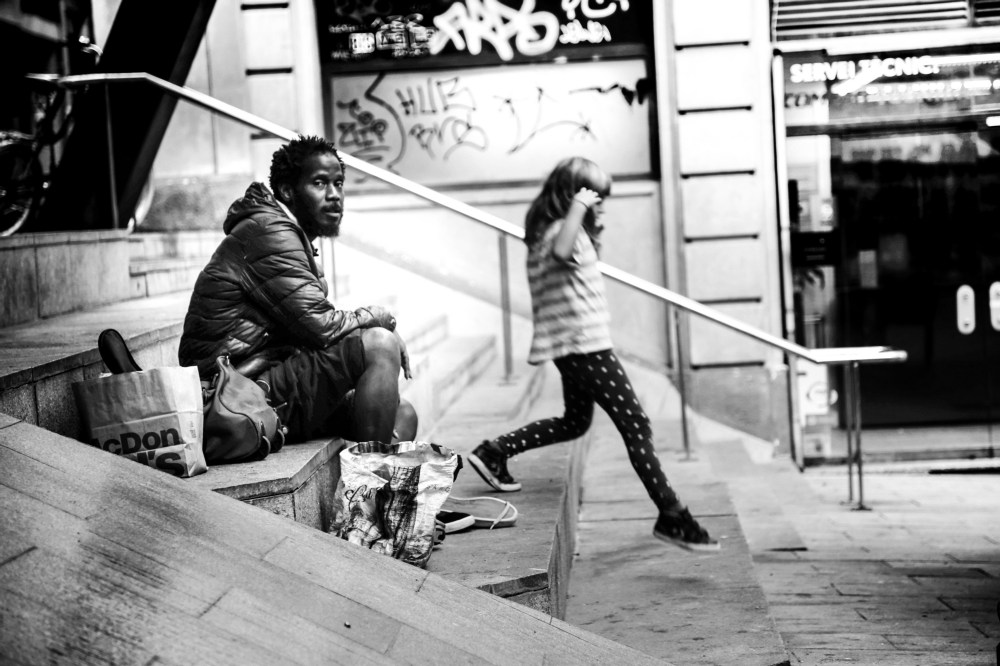Root Shock

Photo Above: Navy Yard, also known as Near Southeast, is a neighborhood on the Anacostia River in Southeast Washington, D.C. Navy Yard is bounded by Interstate 695 to the north and east, South Capitol Street to the west, and the Anacostia River to the south. Approximately half of its area (south of M Street, SE) is occupied by the Washington Navy Yard (including the Naval Historical Center), which gives the neighborhood its name. The neighborhood is located in D.C.’s Ward 6, currently represented by Charles Allen.[1] It is served by the Navy Yard – Ballpark Metro station on the Green Line.
Photo Above: Ponce City Market is a mixed-use development located in a historic building in Atlanta, with national and local retail anchors, restaurants, a food hall, boutiques, offices, and residential units. It was hoped that the new development, along with the new adjacent BeltLine trail and Historic Fourth Ward Park, would stitch together the four neighborhoods that meet where it is located and revitalize the Ponce de Leon Avenue corridor.
Source - wikipedia.org
Gentrification
Text: Rahkia Nance
Gentrification brings upgrades and amenities to a community -- new restaurants and upgraded housing stock are typical in gentrifying neighborhoods. But gentrification also erases the familiar and often, beloved -- friends, family and culture. When longtime residents are displaced because of gentrification, they experience a trauma similar to uprooted plants—a phenomenon psychiatrist and professor Dr. Mindy Fullilove calls “root shock.” Victims of root shock, she said, are at “increased risk for stress-related diseases such as depression and heart attack.”
At the individual level, root shock is the emotional trauma a person experiences when his or her environment is devastated. At the community level, root shock is the loss of interpersonal ties and the social, cultural, political and emotional capital that is vested in the collective connections. In short, root shock “diminishes social, emotional, and financial resources,” Fullilove said.
Gentrification is a national phenomenon, and is generally understood as a renaissance in urban communities where more affluent whites move to dense and walkable neighborhoods where people of color have traditionally lived. As the new population moves in, new developments sprout up to cater to them. Property values ultimately rise and longtime residents are usually displaced. Washington, D.C. provides a textbook example of this shift in population. In 1980, more than 70 percent of Washington, D.C.’s population was black, according to U.S. Census data. In 2010, U.S. Census data put the District’s black population at 50.7 percent, in effect having lost their majority status (although still the largest racial group). Chicago has lost more than a quarter of its black population since 1980, according to data released from the Census Bureau in 2017. Behind the numbers are human beings who were disconnected from their homes and people they love.
Moving is stressful under any circumstance, but gentrification is much more than an address change. It is also grappling with the “pain of losing one’s beloved neighborhood,” said Fullilove, a professor of urban policy and health at The New School in New York City.
“That loss happens on a variety of different levels -- the loss of stores, people, culture and even language,” she said. “People are connected to the places where they live . . . Neighborhoods provide a sense of identity, and when that connection is ruptured it can be traumatic.”
But trauma can occur well before one is physically displaced, Fullilove said. When longtime residents see improvements being made to their neighborhood— improvements they feel are intended for an incoming population— they can feel disconnected. As longstanding customs begin to disappear, people begin to feel a painful loss, Fullilove said. Even more alarming, the loss of culture in gentrifying neighborhoods is often reinforced by the criminalization of longtime residents.
According to a 2017 Washington Post article, newcomers to the Meridian Hill neighborhood in Washington, D.C. in the late 1990s complained to the police about the noise longtime residents made on Sunday afternoons. The “noise” was in fact a drum circle that began in the 1960s to celebrate black independence. The drummers were eventually forced to move and the police began enforcing a curfew on the drummers. This form of root shock is not uncommon.
New residents often involve law enforcement in their attempts to shift a neighborhood’s traditions and longstanding culture by calling in complaints against longtime residents, creating fresh challenges for people of color in gentrifying communities.
In 2017, Harvard University sociology professor Robert Sampson told writer Abdallah Fayyad of The Atlantic of “some evidence that 311 and 911 calls are increasing in gentrifying areas.” The 311 service emerged in the 1980s as urban leaders sought to reduce non-emergency 911 calls. It allows residents to report noise violations and other non-emergency complaints to law enforcement. In 2015, Dr. Joscha Legewie, a sociologist at New York University and Dr. Merlin Schaeffer of the University of Cologne, found that neighbors’ calls to 311 in New York City were 26 percent higher in neighborhoods where the racial composition was beginning to shift as compared to areas nearby with more uniform racial demographics. The Anti-Eviction Project found that in San Francisco from 2008 to 2016, 311 calls disproportionately came from gentrifying neighborhoods.
The criminalization of black and brown people in gentrifying neighborhoods can even be lethal. In 2014, Alex Nieto was killed in the San Francisco neighborhood he’d called home his entire life when a new resident called the police to report him as a suspicious character. The police shot and killed him.
These dynamics all contribute to root shock, which is especially challenging to confront when those displaced are often poor and lack access to mental health services. Their untreated trauma does not only impact them, Fullilove said.
“Inequality among neighborhoods affects the whole society,” she said.
For a deeper dive into the psychological impacts of gentrification, check out Dr. Fullilove’s book “Root Shock: How Tearing Up City Neighborhoods Hurts America, And What We Can Do About It.”


